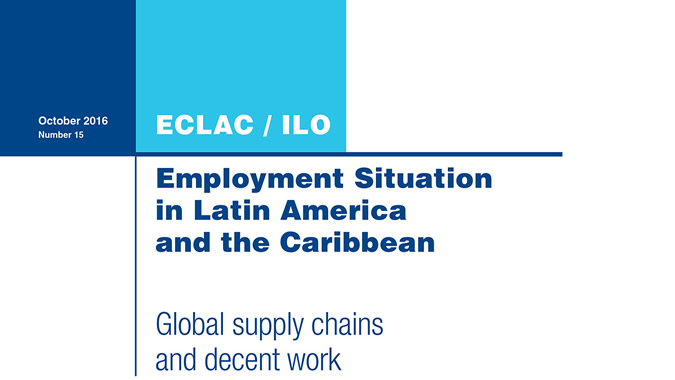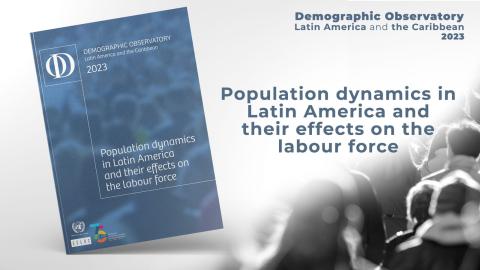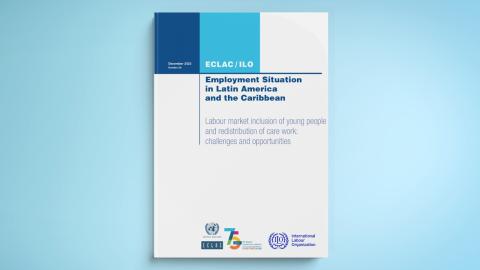Press Release
During the first half of 2016, labor markets in Latin America and the Caribbean continued suffering the effects of a regional economic contraction, registering a significant rise in the unemployment rate and an overall deterioration in their indicators, according to a new report by ECLAC and the ILO.
The Economic Commission for Latin America and the Caribbean (ECLAC) and the International Labour Organization (ILO) released today issue N⁰ 15 of their joint publication Employment Situation in Latin America and the Caribbean (in Spanish), in which they analyze the region’s labor performance during the first half of this year.
The report indicates that, according to the most recent projections, the regional Gross Domestic Product (GDP) will contract -0.9% in 2016. During the first half of the year, this contraction resulted in a 0.6 percentage point decline in the urban employment rate, which, when coupled with an increase in the participation rate, caused unemployment to rise by 1.6 percentage points compared with the same period last year.
The urban employment rate is the proportion of the working-age population that is employed, while the participation rate refers to the proportion of the working-age population that is either employed or unemployed (meaning that people who are outside the labor force are excluded, mainly students, housewives, retirees, etc.).
During the second half of 2016, no significant improvement in the labor situation is expected at a regional level, the study indicates. The contraction in regional GDP and its impact on labor demand should serve to hold the interannual decline in the employment rate steady. At the same time, the expansion of informal jobs—and self-employment work above all—is seen lessening this impact in quantitative terms, but would reflect a deterioration in job quality.
The document adds that the regional urban open unemployment rate is expected to keep rising and to end 2016 at 8.6%. On average, regional unemployment reached 7.0% in 2014 and 7.4% in 2015.[1]
“Although this negative performance has been strongly influenced by the case of Brazil and its heft in the weighted averages, all the other South American countries with available information, except Peru, are also suffering increases in their unemployment rate. In contrast, in Central American countries and the Caribbean, with the exception of Panama and Trinidad and Tobago, the unemployment rate declined,” Alicia Bárcena, ECLAC’s Executive Secretary, and José Manuel Salazar, the ILO’s Regional Director for Latin America and the Caribbean, indicate in the document’s prologue.
They add that this notable heterogeneity among subregions can also be observed in the available indicators on job quality, the interannual change in registered employment, and on real wages in formal employment.
Along with analyzing the region’s labor situation, the ECLAC/ILO report addresses the participation of Latin American and Caribbean countries in global supply chains and its impact on decent employment. It indicates that the region’s insertion is weaker than that of other areas of the world and states that the relatively poor linkages shown by Latin American and Caribbean economies reflect a low degree of productive diversification. In that sense, the document notes that the impact of exports on employment is greater for indirect employment, especially in sectors such as mining or food production, than it is for direct employment.
The report also analyzes some examples of countries in the region that have achieved improved economic insertion in global supply chains, which can then translate into social improvements through more job creation, higher wages and greater labor formality. However, it has been demonstrated that this link is not automatic, since the results in terms of decent work also depend on the other economic, labor and educational policies that accompany this process.
The document was released today in Santiago, Chile during a seminar on “Protection and Training: Institutions to Improve Labor Insertion in Latin America and Asia,” which was organized by ECLAC in conjunction with the Economic and Social Commission for Asia and the Pacific (ESCAP). At the event, specialists from several countries and international experts presented the results of studies done in the framework of a project carried out by both United Nations institutions, with the aim of contributing to the debate on perfecting protection mechanisms against unemployment and national systems for professional training and capacity-building in a changing world of work.
[1] As previously announced, starting with this issue of the ECLAC/ILO joint report, the regional series reflect the incorporation of new surveys (in the case of Brazil) and new coverage (in the cases of Colombia, Mexico and the Dominican Republic), which means that they are not comparable with the information published in the past.



